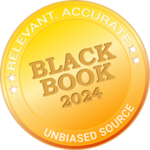Customer Care: 866.625.8532 Sales Inquiries: 503.419.3544

CarePayment Named Top Performer in Patient Financing and Financial Engagement Solutions by Black Book Research - Read Press Release
Blog | September 25, 2024
Breaking Down Traditional vs. Alternative Payment Models in Healthcare

How patients pay for their care is undergoing a major shift. For decades, traditional payment models have dominated the industry, focusing on the quantity of services delivered rather than the quality of care provided. However, an emerging trend is pushing the sector toward more value-based, patient-centric approaches. These alternative payment models in healthcare are designed to reward providers for the quality and outcomes of the care they offer, rather than simply the volume of services. This shift aims to foster a healthcare system that promotes and rewards improved patient outcomes, efficient use of resources, and reduced costs.
At the heart of this evolution is healthcare payment technology—a broad term that encompasses the tools, platforms, and systems used to facilitate financial transactions between patients and healthcare providers. These technologies include everything from traditional billing systems to more advanced automated payment options that streamline and simplify the payment process. As patients are prioritizing both better care and cost savings, providers choosing to explore alternative payment models in healthcare can improve patient outcomes while reducing financial burdens.
Traditional Payment Models: Volume Over Value
Traditional payment models, often referred to as fee-for-service, have been the backbone of healthcare payments for decades. Under the fee-for-service model, healthcare providers are compensated for each service, procedure, or test they perform, with little regard for the outcomes or quality of care. For example, if a patient visits a doctor multiple times for the same issue, each visit and test conducted is billed separately. This system incentivizes quantity over quality, leading to concerns about unnecessary treatments or procedures that may not improve patient health but instead simply drive-up costs for patients.
Under the fee-for-service model, patients can face mounting medical bills as every appointment, lab test, and hospital visit is added to their final tally. The more services they need, the more they pay, and in many cases, patients end up shouldering the financial burden of unnecessary treatments. In short, traditional payment models prioritize volume over value, often leading to higher healthcare costs for patients without necessarily delivering better care.

Alternative Payment Models in Healthcare: A Focus on Value and Cost Savings
In contrast, alternative payment models in healthcare take a more patient-centered approach to save patients money by focusing on the quality of care and overall patient outcomes. These models shift away from the fee-for-service system and instead reward healthcare providers for delivering effective, efficient, and coordinated care that leads to better health outcomes. When providers focus on preventive care, effective management of chronic conditions, and reducing unnecessary hospital visits, patients not only experience better health but also lower medical costs.
One of the key principles of alternative payment models is value-based care. In this model, providers are incentivized to keep patients healthier through proactive care rather than reactive treatment. For example, a healthcare provider might be rewarded for reducing hospital readmissions or managing a patient’s chronic condition more effectively, which leads to fewer costly interventions down the road. By emphasizing preventive care and long-term health management, patients often require fewer services, resulting in lower out-of-pocket expenses.
The Role of Healthcare Payment Technology
Healthcare payment technology is crucial in enabling alternative payment models by simplifying billing processes and reducing administrative overhead. Automation, including payment reminders and billing notifications, helps patients manage their healthcare costs more efficiently. For providers, automation reduces labor costs and minimizes billing errors, leading to lower bills for patients and fewer late fees. This technology-driven approach benefits both providers and patients by making the payment process smoother and stress-free.
CarePayment, for example, offers patients various options to pay their healthcare bills in ways that best suit their needs. Patients can choose to pay online, set up automatic payments, send payments by mail or phone, or even use a mobile app. These flexible payment options, combined with the efficiency of automated billing, help patients stay on top of their healthcare costs and avoid the stress of missed payments.
Shifting to Alternative Payment Models: A Healthier, More Affordable Future
Under the fee-for-service model, healthcare providers rely on increasing the number of services they deliver to maintain financial success. This system encourages higher patient volumes, which in turn generates more revenue. However, as healthcare delivery grows more complex and providers face limitations in their ability to manage larger patient loads, this volume-centric approach becomes unsustainable. The mounting pressure on healthcare providers is one of the primary factors driving the shift away from fee-for-service toward models that prioritize quality and efficiency.
The data reflects a growing shift toward alternative payment models, with adoption increasing from 30.1% of payments in 2018 to 35.5% by 2020. Looking ahead, projections indicate that by 2025, 50% of healthcare payments will be tied to alternative payment models, underscoring the growing importance of these models in advancing digital health solutions and value-based care.
As providers navigate the transition from fee-for-service to alternative payment models, several key considerations should guide the shift:
- Adopt Value-Based Care Frameworks: Providers should focus on integrating value-based care into their practices by prioritizing preventive care, chronic disease management, and patient education. This will not only improve health outcomes but also help align with alternative payment models.
- Leverage Healthcare Payment Technology: Investing in advanced healthcare payment solutions, such as automated billing systems and payment tracking tools, can streamline administrative tasks, reduce costs, and improve patient satisfaction.
- Evaluate Financial Risk Models: Providers need to assess the financial implications of transitioning to alternative payment models, including taking on risk-based payment models like bundled payments or shared savings programs. Understanding these financial risks is crucial for long-term success.
- Strengthen Collaboration with Payers: Building strong relationships with payers will be essential in negotiating value-based contracts and aligning incentives to improve patient outcomes while controlling costs.
- Continuous Monitoring and Data Utilization: Providers should use advanced data analytics to track patient outcomes and adjust care strategies. Effective use of data ensures that the care provided is both high-quality and cost-effective, aligning with the goals of alternative payment models.


